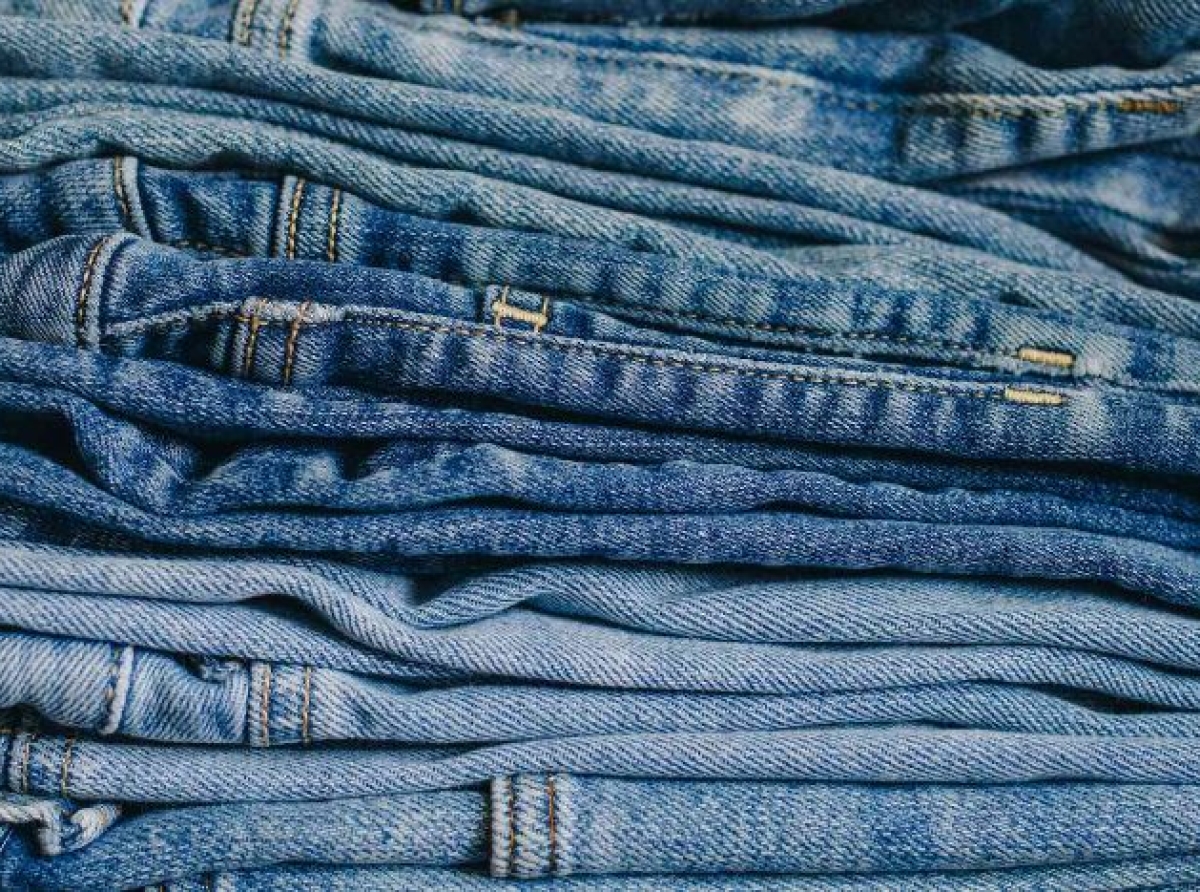11 November 2022, Mumbai:
"The oldest use of denim alludes to a serged cloth from Nimes, France in the 1850s, a twill fabric frequently used in military uniforms." Since fabrics were given names based on where they were produced, "denim" is a derivative of "serge de Nimes." The "all-cotton denim" that we are familiar with today was not yet a reality; before then, denim was a mixture of silk and wool.
Genesis
Later developed in American mills, the latter was initially invented in England. The durable and rigid fabric known as denim is created from cotton or cotton blends using a two-toned weaving technique that produces a diagonal pattern from tightly packed fibers. The method described above, which places natural or white yarn in the weft (horizontal) position and dyed thread in the warp, gives jeans their distinctive blue appearance.
Because the dye covers the thread rather than penetrating it, denim is very malleable. This enables various finishes to be achieved using techniques like enzyme washes, sandblasting, or bleaching.
Water thirsty
As was previously said, cotton or cotton blends are used to create modern denim. So, since it's primarily made of natural fiber, how much influence may it have on the environment? Despite being a raw material, cotton is a very thirsty crop and is not as sustainable as it may seem. A standard cotton pair of denim jeans can require more than 9,000 gallons of water to create, accounting for 69% of the water footprint of textile fiber manufacturing. Compare it with the 2,000 gallons of water required to produce one cotton T-shirt.
Opportunities Unlimited
Numerous chemical washes are applied throughout the manufacturing process to make denim softer or more wearable and prevent shrinking. The clothes can then be put through various procedures by manufacturers to create particular styles, such as damaged or faded jeans.
We've all developed a fondness for the carefree-chic style of frayed jeans, but have you ever pondered how denim is processed to produce that look?
Story of cotton or a cotton blend
Clothing made of denim is often made of cotton or a cotton blend. Before being packed into bales, it is first gathered and sorted into fibers. Our denim fabric construction tutorial on Textile School explains that the fabric goes through a weaving process to create yarn dyed into indigo or other colors, depending on the design, to make a pair of jeans.
The industry is keeping the powder dry by cashing in on this blue gold if one were to describe it as a highly liquid ever-green product, that has weathered the storm/s of the changing fashion vagaries, economic downtrend, the advent of newer fabrics & textile space evolutionary developments through the years with its acute tolerance to blend and consistently be sensitive to discerning customers' evolving fashion sensibilities. The article makes a case for underlining a caveat that this is one piece of fabric that can even let elephant dancing fire up," Cash is reality, profit is an opinion".
Ills
Sandblasting is a standard method but has drawn some criticism since it "may be extremely destructive to employees' health if performed without adequate safety equipment." To soften the fabric and wear down the jeans, the method entails blasting them with sand. A significant amount of silica dust is produced throughout the process, and when inhaled by employees, it can lead to silicosis, a potentially fatal lung condition.
Is Denim a Sustainable Fabric?
The article tends to debunk the debate in trade discourse around the sustainability aspect of this magic fabric one would reckon that albeit the argument is, " There is no such thing as 100% elastic or 100% inelastic implying thereby that it is fallacy to declare denim fabrics are Sustainable Or Unsustainable". Stretching the argument," Contemporary denim fabrics are definitively more sustainable, though applying the same rationale it is hard to make a similar claim about the traditionally produced pieces of denim.
Also, so as to gauge how sustainable denim is a product of the manufacturing processes, practices, supply chains regard to its traceability and transparency, and commitment levels both across up & downstream anchor actors/players.

























